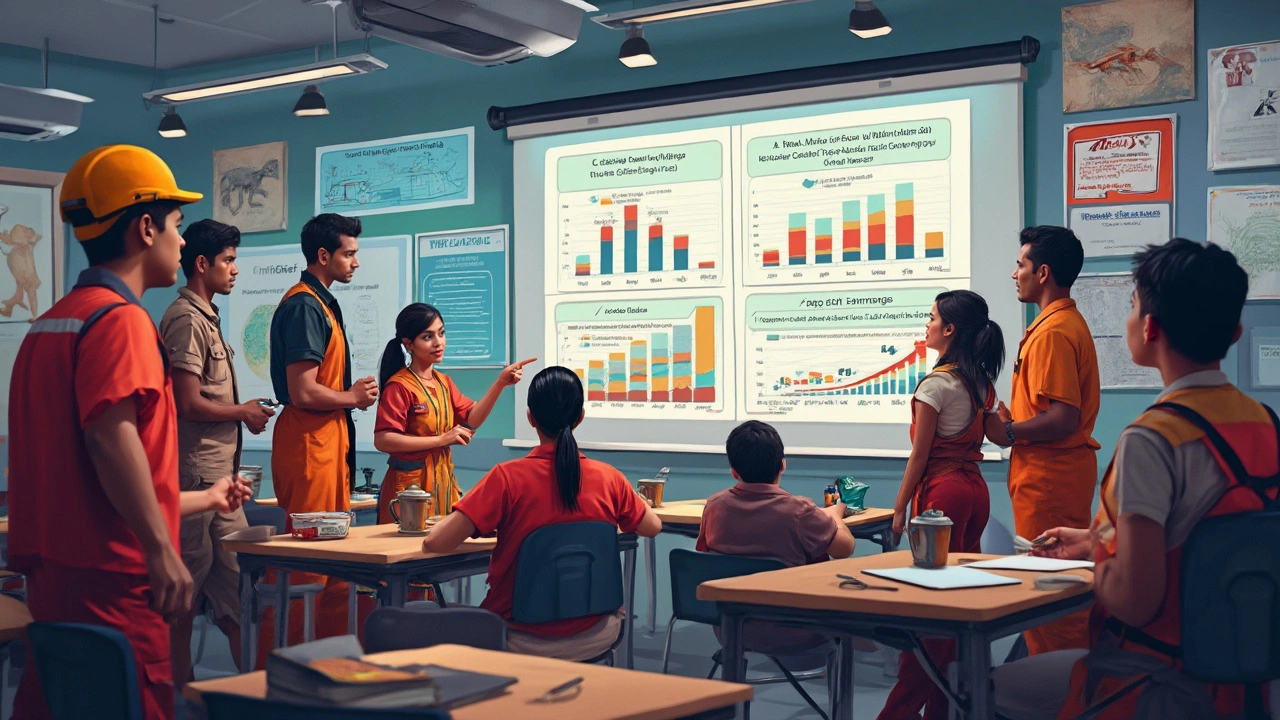Vocational Courses – Your Shortcut to Skillful, Well‑Paid Jobs
Looking for a quick way to start earning? Vocational courses are the answer. They focus on real‑world skills, cut down years of study, and line you up with jobs that actually need what you know. From automotive repair to digital marketing, there’s a program for almost every interest.
Why Choose Vocational Training Over Traditional Degrees?
First off, time matters. Most diplomas finish in 6‑12 months, while a bachelor’s degree takes three to four years. That means you can start earning sooner and avoid massive tuition bills. Second, employers love hands‑on experience. Vocational courses include labs, internships, or on‑the‑job projects, so you walk out of the classroom ready to work.
Third, the job market in India is hungry for skilled workers. The government’s Skill India mission aims to train millions, and companies are offering higher salaries to candidates who can hit the ground running. In sectors like healthcare assistants, welding, or data analytics, vocational grads often earn as much as fresh graduates from four‑year colleges.
How to Pick the Right Vocational Course for You
Start with your passion. If you love fixing things, think about automotive or electrical technician programs. If you enjoy creativity, graphic design or culinary arts could fit. Next, check the course’s accreditation. Look for approvals from bodies like AICTE, NSQF, or industry‑specific councils. Accredited courses ensure you get recognized certificates that employers trust.
Don’t forget the placement record. Institutes that boast high job‑placement percentages usually have strong industry ties. Ask about internship opportunities, campus recruitment drives, and alumni success stories. A solid placement cell can turn a certificate into a paycheck faster.Finally, consider the cost‑benefit ratio. Some private institutes charge high fees but offer state‑of‑the‑art labs. Public polytechnics may be cheaper but still provide good training. Calculate the total investment versus the average starting salary for graduates of that program.
Ready to start? Here are three popular vocational paths that are in demand today:
- Digital Marketing Certification – Learn SEO, social media ads, and analytics. Companies are willing to pay ₹3‑5 LPA for fresh talent.
- Healthcare Assistant Diploma – Covers patient care basics, medical terminology, and basic lab work. With India’s aging population, demand is soaring.
- Automobile Service Technician – Hands‑on training on engines, diagnostics, and electric vehicle tech. Average starting salary around ₹2.5‑3 LPA.
Each of these courses can be completed in under a year, often with flexible evening or weekend batches for working students. Many also offer online components, so you can learn from home and attend labs only when needed.
In short, vocational courses give you a direct line to the workforce, lower tuition, and a clear skill set that employers want. Pick a field you enjoy, verify accreditation, and check placement stats – and you’ll be on your way to a steady job without the years of theory that rarely get used on the job.
Vocational Courses With the Highest Salary: What's Worth Your Time?
Curious about which vocational course leads to the fattest paycheck? This article breaks down the real earning potential of top hands-on careers, without any fluff. Get the facts about which trades are topping the charts in 2025 and where you'll find the best return on your investment. Find out what makes these paths so lucrative and get some tips on how to make the smartest choice for your future. Looking to skip the four-year degree debt and still earn big? You’re in the right place.
read moreCollege vs Vocational Training: Key Differences Explained
Choosing between college and vocational training isn't as simple as picking where to hang out for the next few years. This article breaks down how college and vocational programs really work, what each means for your wallet, and who thrives in these different settings. You'll also find some cool facts about graduation rates, earning power, and even shortcuts to getting a job. If you're figuring out your next step after high school, this guide lays it all out, plain and simple.
read more
